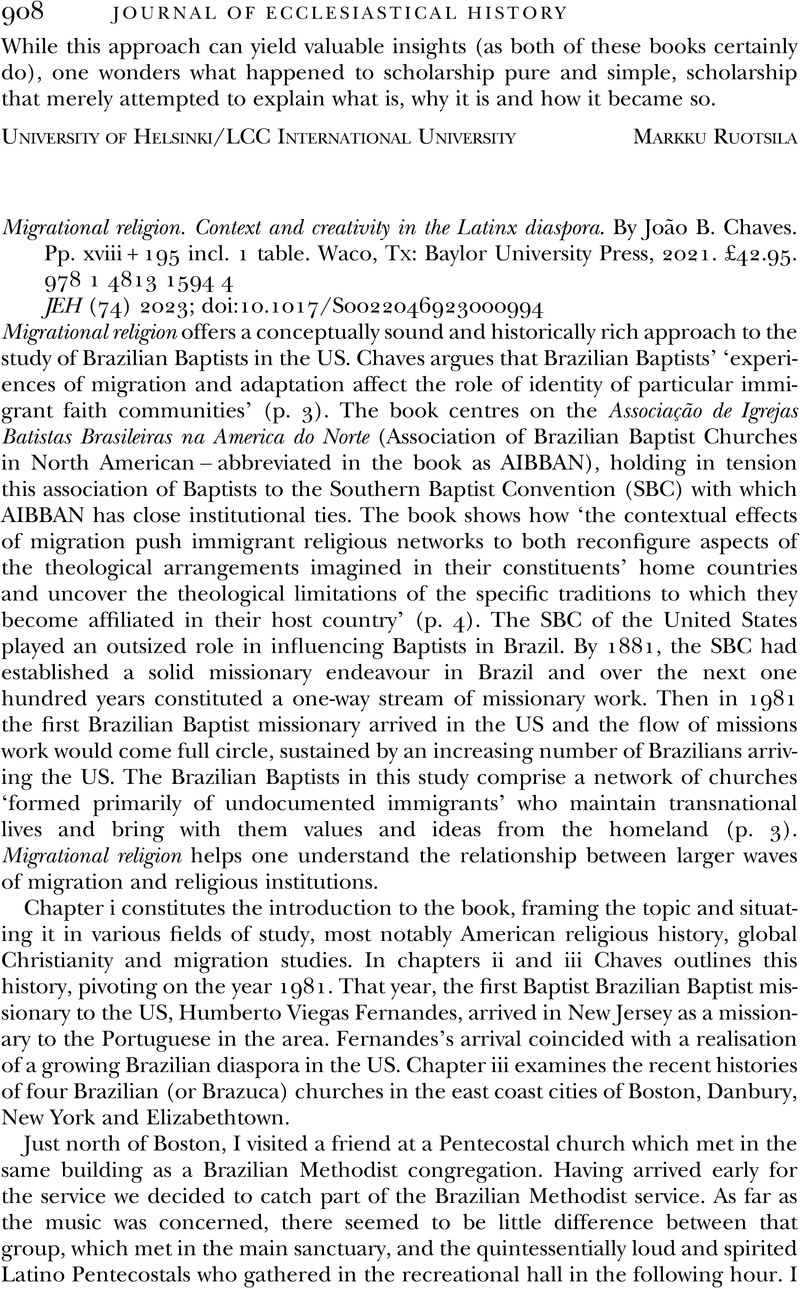No CrossRef data available.
Article contents
Migrational religion. Context and creativity in the Latinx diaspora. By João B. Chaves. Pp. xviii + 195 incl. 1 table. Waco, Tx: Baylor University Press, 2021. £42.95. 978 1 4813 1594 4
Review products
Migrational religion. Context and creativity in the Latinx diaspora. By João B. Chaves. Pp. xviii + 195 incl. 1 table. Waco, Tx: Baylor University Press, 2021. £42.95. 978 1 4813 1594 4
Published online by Cambridge University Press: 04 October 2023
Abstract
An abstract is not available for this content so a preview has been provided. Please use the Get access link above for information on how to access this content.

- Type
- Reviews
- Information
- Copyright
- Copyright © Cambridge University Press 2023



